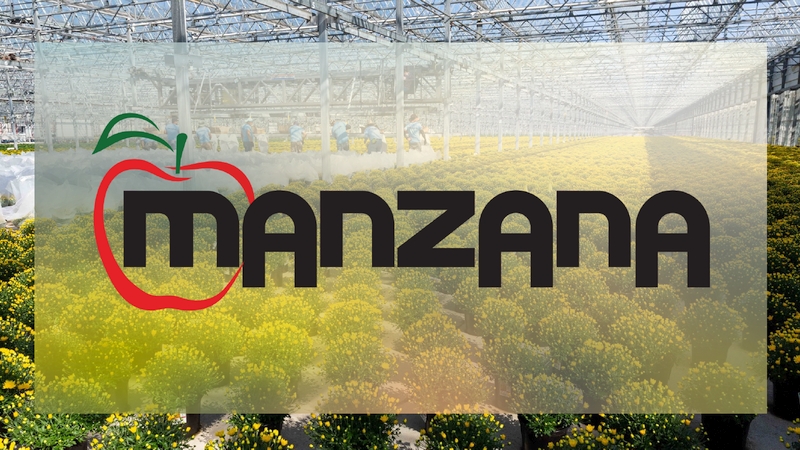5 Tips For Adding The Produce Restaurants Want To Your Greenhouse Crop Mix

With 9,000 square feet of production – and another 6,000 square feet coming in 2013 – greenhouse produce is an increasingly important part of the business mix for Tangletown Gardens. Owners Dean Engelmann and Scott Endres have been growing vegetables and herbs for retail in their Minneapolis-based garden center for about 10 years, and more recently to help supply an 18-week Community Supported Agriculture program in spring and summer. Much of the produce now is used to supply their own restaurant, Wise Acre Eatery.
With his unique perspective as grower, retailer and restaurateur, we asked Engelmann for five tips to help greenhouse ornamental growers looking to add produce to their own crop mix.
1. Offer Your Customer A Diverse Mix.
“We’ll try anything,” Engelmann says. “We grow all the expected things like lettuce, spinach, arugula and radishes. We do microgreens in trays. Even in the dead of winter, the restaurant is clipping those microgreens right as they’re going into salads. We do a whole gamut of herbs through the winter because nothing beats fresh herbs.”
The crop mix includes some unexpected items as well.
“We grow leeks and Swiss chard. We do things like pea shoots and popcorn shoots, which our chef has fun with. We’re actually getting really good at growing carrots in pots, believe it or not. We also grow mache or ‘corn salad’ – not a lot is known about it here, but it’s a very common European green in the winter and it’s very popular with the restaurant,” he says.
Particularly in the wintertime, chefs are dying for anything other than the sale old same old, he says.
“I would suggest going to a chef or a restaurant that may have the sensibility to explore something like this and say, ‘Tell me three things you might like.’ And then grow a sample to show them what you can offer,” Engelmann says.
“You have to do it really well, but chefs and restaurateurs can find a way to justify paying a little more for these things if they’re fresh,” he says.
2. Understand How To Maintain Clean Crops.
Crop protection programs are clearly different for food crops than for flowers.
“As ornamental growers, if we have an aphid outbreak we’re used to being able to just go in and knock it down. That’s very different with produce, obviously. You have reentry intervals and other considerations about the kinds of things you’re spraying on produce you’re selling to a restaurant,” Engelmann says.
“Sanitation and cleanliness are super important so you don’t get insects in the first place. We use lots of insecticidal soaps and apply them repeatedly to keep everything clean. The nice thing is the crop time is usually so short, you don’t have to do much of anything if you’re growing smart,” he says.
3. Keep Delivery Management In Mind.
Restaurants look for frequent deliveries to ensure the freshest produce for their customers.
“We’d love to load up and deliver once a week, but to stay true to the freshness, we harvest more frequently and deliver more frequently. We don’t want to stockpile lettuce and see how long they can get it to last,” Engelmann says.
The mechanics of making those deliveries feasible for your business are an important consideration.
“I think the challenge for a lot of growers will be having enough diversity and enough depth of product so they can justify the delivery economically. You have both capital and labor costs you need to manage,” he says. “And in the winter, you will need a delivery vehicle that’s more than just the back of a pickup truck or a cooler, especially in areas like Minnesota, where we are. You have to have heat so things won’t freeze if you are traveling very far to make a delivery.”
4. Taste Trumps Everything
Growers may be tempted to look for the crops and varieties that are easiest to grow or produce the highest yield. But that’s not the best route to take.
“At the end of the day, taste trumps everything,” Engelmann says. “When you’re choosing varieties, don’t just look for a hybrid that will pump out something that looks like a tomato. You really need to consider taste. That’s what will sell to a restaurant. What does that tomato taste like? What does that pepper taste like? You need to find carrots that have a sweet flavor, rather than a bitter one. It’s often trial and error to figure out what works best for you, but it’s an important consideration.”
5. Consider Cost Benefits
If you’re an ornamental grower looking into produce as a new crop, chances are you’re doing so to fill some gaps in your production and help cover your overhead. Engelmann says that has been a big benefit for Tangletown Gardens.
“We monitor our costs and produce really isn’t all that expensive for us to grow. Our greenhouses are minimally heated – we let the sun do a lot of the work. If we weren’t doing vegetables in the winter, that greenhouse would be dormant,” he says. “If you’re thinking about some capital expansion and adding a greenhouse and you want to help spread those costs out, it’s a great way to help. You can maybe take a few years off your loan and get that mortgage down quicker.”
Another benefit is the people aspect.
“We also grow vegetables on 45 acres outside. By maintaining the greenhouse production through the winter, I can keep my manager on to manage that program all winter long. We’re not laying him off and hoping to get him back again for the summer,” Engelmann says. “From an HR standpoint, it’s a win-win.”









